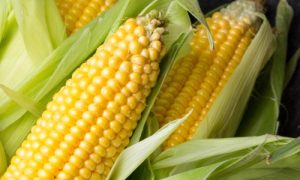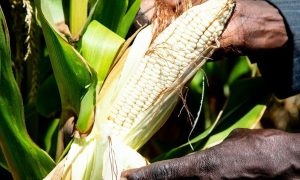Zimbabwe’s maize imports could rise markedly in the 2023/24 marketing year

From a maize supply perspective, South Africa is in a relatively strong position.
According to recent estimates by the Crop Estimates Committee, the country’s 2022/23 commercial maize production could reach 16,1 million tonnes, up 5% year-on-year and the third largest on record. Given South Africa’s annual maize needs are roughly 12 million tonnes; the country could have over 3 million tonnes for export markets in the 2023/24 marketing year that started in May (this marketing year corresponds with the 2022/23 production year). This ample harvest materialized through farmers’ persistent efforts to plant even beyond the optimal planting window, which closed in December before the entire area of 2,6 million hectares was planted as heavy rainfall disrupted farmers’ activity. Thus, farmers planted some hectares outside this window, and some feared there would be poor yields and frost risks later in the season. Fortunately, the worst did not materialize, and South Africa expects an ample maize harvest.
However, neighbouring Zimbabwe was not as fortunate as South Africa. Initially, Zimbabwe’s 2022/23 maize production season had a better start than South Africa’s. The favourable rainfall from October to November allowed farmers to till the land and start planting. But the season hit a dry spell in December, adversely affecting the maize crop in the southern and western areas of the country. Zimbabwe’s fortunes worsened when the country was hit by Cyclone Freddy in late January 2023, leading to crop damage. Hence, Zimbabwe’s 2022/23 maize production could reach 1,5 million tonnes, almost half of the ample harvest of 2,7 million tonnes in the 2020/21 production season, according to the latest estimates by the Pretoria Office of the United States Department of Agriculture (USDA). With that said the expected harvest of 1,5 million tonnes is a mild improvement from the 2021/22 production season’s maize harvest of 1,4 million tonnes but 32% lower than the annual maize needs of 2,2 million tonnes. At face value, Zimbabwe might have to import about half a million tonnes to fulfil the yearly maize needs in the marketing year 2023/24.
It is also worth considering that the Zimbabwe Grain Marketing Board is mandated to maintain a minimum of half a million tonnes of strategic maize reserve in physical stocks. Therefore, Zimbabwe will likely require a million tonnes of imports in the 2023/24 marketing year. Still, given the poor economic conditions in Zimbabwe, it is unclear at this stage if the Zimbabwe Grain Marketing Board will procure the half million tonnes strategic reserve in full within the 2023/24 marketing year. We will closely monitor the country’s maize import pace in the coming months, as it would lead to a substantial increase in regional maize demand.
Fortunately, South Africa’s 2023/24 marketing year maize surplus of over 3 million tonnes will help meet the potential rise in imports in Zimbabwe. While Zimbabwe could import a particular share of maize from Zambia, the country will likely rely more on South Africa. In the previous season, when Zimbabwe was not prominent in South Africa’s maize markets, the country had decent stocks from the last good harvests and only required maize imports of about 220 000 tonnes in the 2022/23 marketing year, according to data from the USDA. This also means there will likely be increased demand for South Africa’s maize towards the end of the year. South Africa also has established markets in the Far East and Europe, which have consistently remained active in the maize import business. This may spell good news for South African maize farmers and traders, but for grain users, the potential increased demand at the end of the year could add upside pressure on prices. Importantly, unlike Kenya, which prohibits the importation of genetically modified maize, Zimbabwe allows imports, which further opens room for South African grain exporters.
In addition to this solid regional maize demand, the added upside factor to maize prices at the end of the year into the new year will also be the uncertainty about the new season crop on the back of an expected El Niño event. The uncertainty could be an issue, although we hope El Niño will have a mild impact on the 2023/24 production season because of better soil moisture on the back of four consecutive rainy seasons. With that said, the effect of the expected El Niño on Zimbabwe could again be severe as the country is not using similar farming inputs as South Africa regarding seeds and certain agrochemicals, and even the level of fertilizer use is lower. All these issues influence the yield level, especially in potentially drier seasons.
While Zimbabwe borders South Africa, its 2022/23 maize harvest turned out relatively poorer and thus leading to a higher dependency on its neighbour. Zimbabwe’s 2023/24 maize imports will likely reach levels that we last saw in 2016, but this time around, it may not be a struggle to secure supplies from South Africa and even Zambia.
Weekly highlights
South Africa’s agricultural machinery sales will likely soften in the second half of the year
We continue to see a mixed picture in South Africa’s agricultural machinery sales. For example, tractor sales were down by 13% y/y in May 2023, with 655 units sold – see the chart. Meanwhile, combine harvester sales were 65 units, up 23% y/y. The robust combine harvester sales reflect the expected large summer crop harvest. As mentioned above, South Africa’s 2022/23 maize harvest is estimated at 16,1 million, 5% higher than the 2021/22 season’s harvest and the third-largest harvest on record. Soybeans harvest could reach a record 2,8 million tonnes.
That said, we still believe South Africa’s agricultural machinery sales will likely cool off this year, following a few years of excellent activity. As we stated a few times, South Africa’s tractor sales for 2022 amounted to 9 184 units, up 17% y/y and the highest annual sales for the past 40 years. The combine harvester sales amounted to 373 in the same period, up 38% y/y and the highest yearly sales figure since 1985.
The agricultural data calendar this week is again reasonably quiet. On the global front, on Tuesday, the USDA will release its weekly update of the US Crop Progress Report. The US farmers have nearly completed summer crop planting, thanks to favourable weather conditions in the past few weeks. For example, on 11 June, about 93% of the maize planted had emerged compared with 87% in the corresponding period a year ago. Moreover, farmers had already ploughed about 96% of the soybean intended area compared with 87% on 11 June 2022. About 86% of the planted maize had already emerged, compared with 68% on 11 June 2022. The USDA will release its weekly US Grains and Oilseeds Exports data on Friday.
On the domestic front, on Wednesday, SAGIS will release its weekly South Africa’s Grain Producer Deliveries data for 16 June 2023. In the previous release on 09 June, South Africa’s 2023/24 maize producer deliveries were about 1,2 million tonnes. This placed the 2023/24 deliveries at 3,3 million tonnes out of the expected harvest of 16,1 million. The soybean harvest activity has progressed more than maize because it was planted earlier in the season. The harvest is now close to completion, and on 09 June, about 2,5 million tonnes of soybeans had already been delivered to commercial silos out of the expected crop of 2,8 million tonnes. On the same day, sunflower seed producer deliveries amounted to 534 269 tonnes out of the expected harvest of 797 610 tonnes.
Also, on Wednesday, Statistics South Africa will release the Consumer Price Index (CPI) data for May 2023. In this data, our focus will be on the food category. To recap, consumer food inflation moderated at 14,3% in April 2023 from 14,4% in the previous month. The food products prices that underpinned this slight deceleration are meat; oils and fats; and fruit. Meanwhile, other product prices increased mildly.
On Thursday, SAGIS will publish its weekly South Africa’s Grain Trade data for 16 June. In the previous release on 09 June, the sixth week of the 2023/24 marketing year, South Africa exported 131 694 tonnes of maize. Of this volume, about 42% was exported to Taiwan, 23% to Japan, 16% to Vietnam, 11% to South Korea, and the rest to the neighbouring countries. This placed South Africa’s 2023/24 maize exports at 430 451 tonnes out of the seasonal export forecast of 3,0 million tonnes (down from 3,64 million tonnes of exports in the 2022/23 season).
South Africa is a net wheat importer, and 09 June was the 36th week of the 2022/23 marketing year, and there were no imports for the week. South Africa’s 2022/23 wheat imports currently stand at 976 564 tonnes. The seasonal import forecast is 1,6 million tonnes, roughly unchanged from the previous season.
South Africa’s major wheat suppliers in the 2021/22 season were Argentina, Lithuania, Brazil, Australia, Poland, Latvia and the US. If one looks into South Africa’s wheat import data for the past five years, Russia was one of the significant wheat suppliers, accounting for an average share of 26% yearly. Argentina and Brazil replaced this in the 2021/22 season. However, Russia is back on the suppliers’ list in the 2022/23 season and is again one of the significant wheat suppliers to South Africa thus far.

















